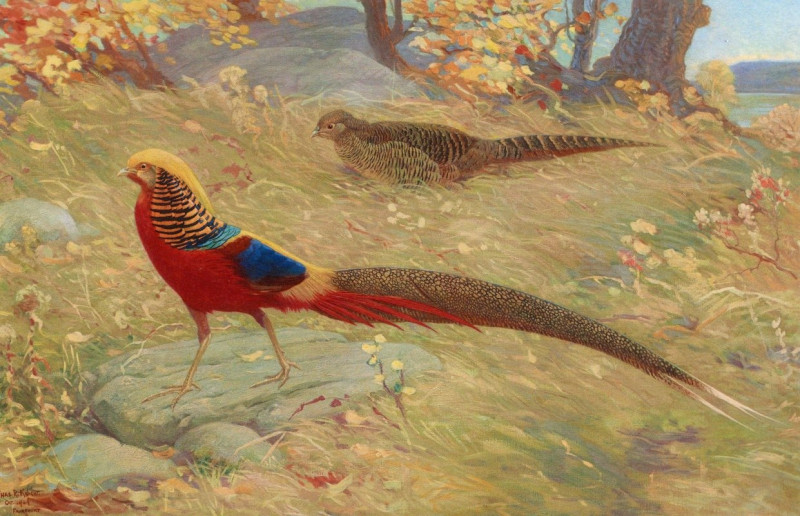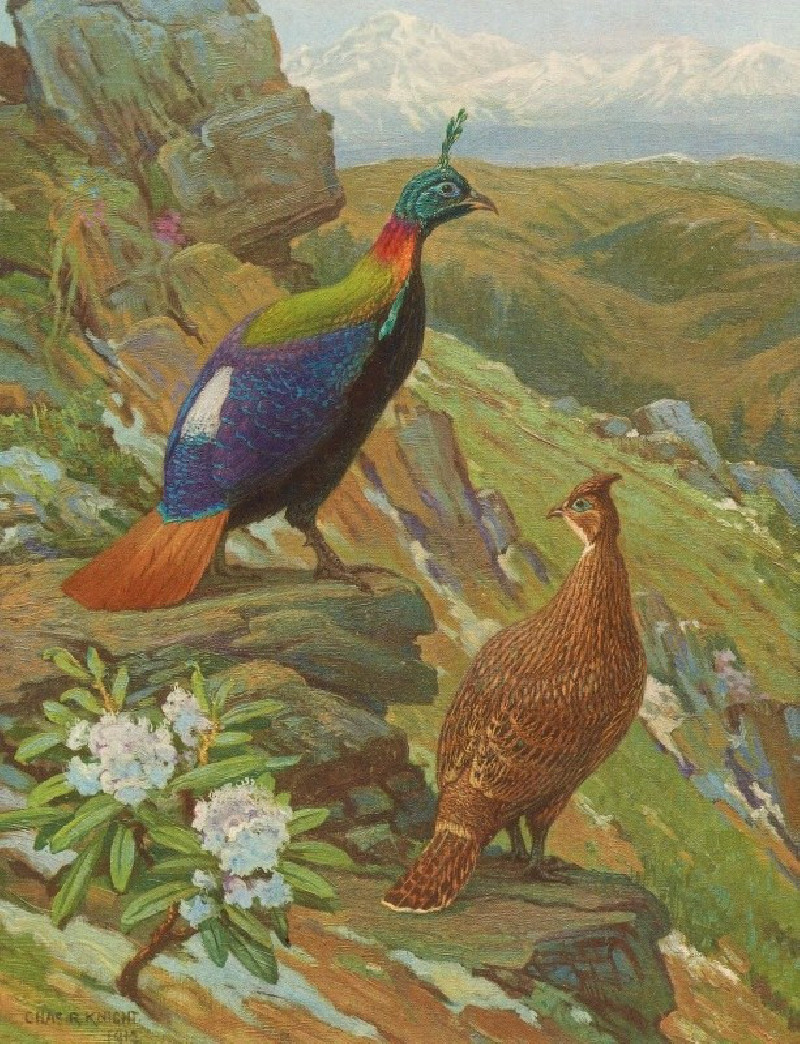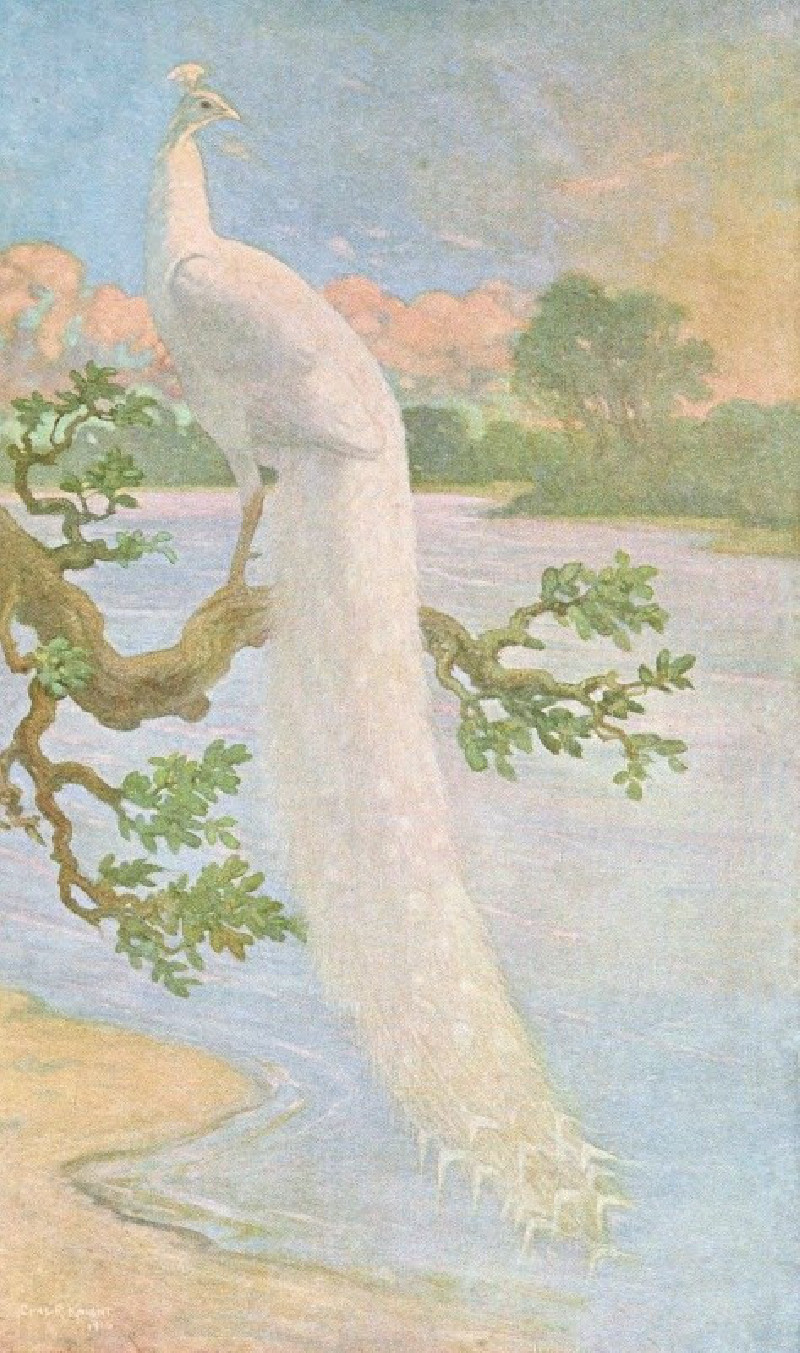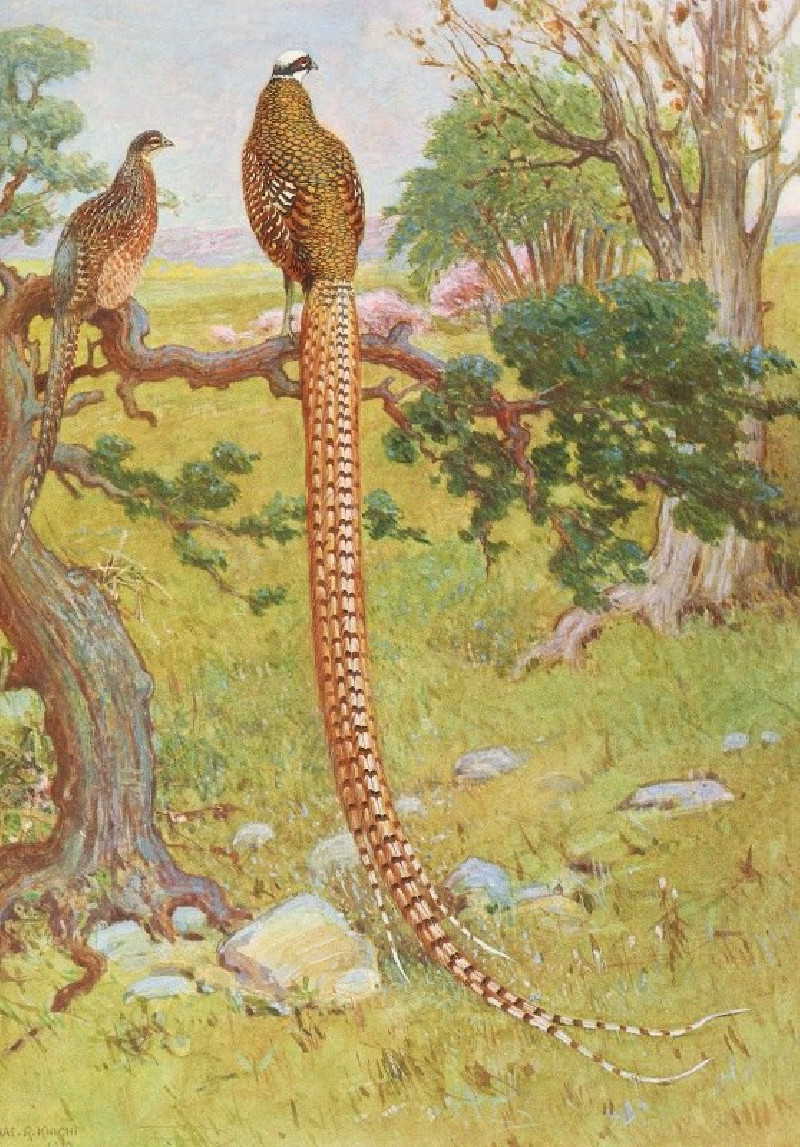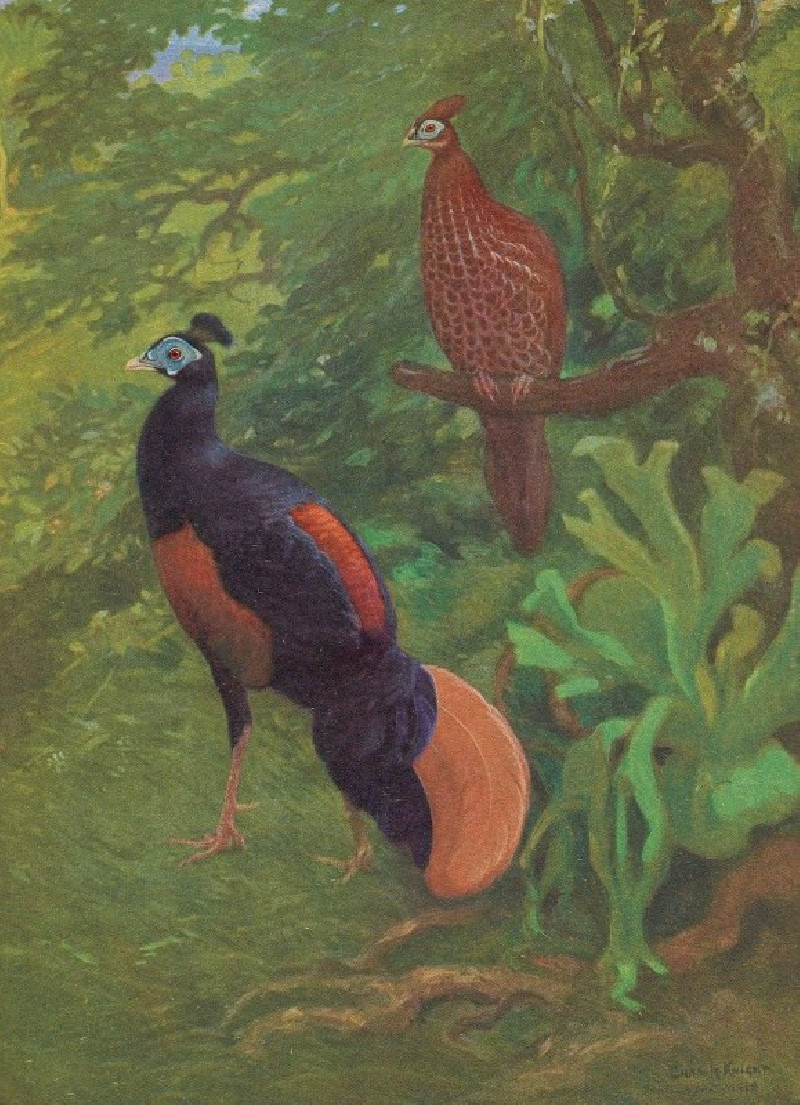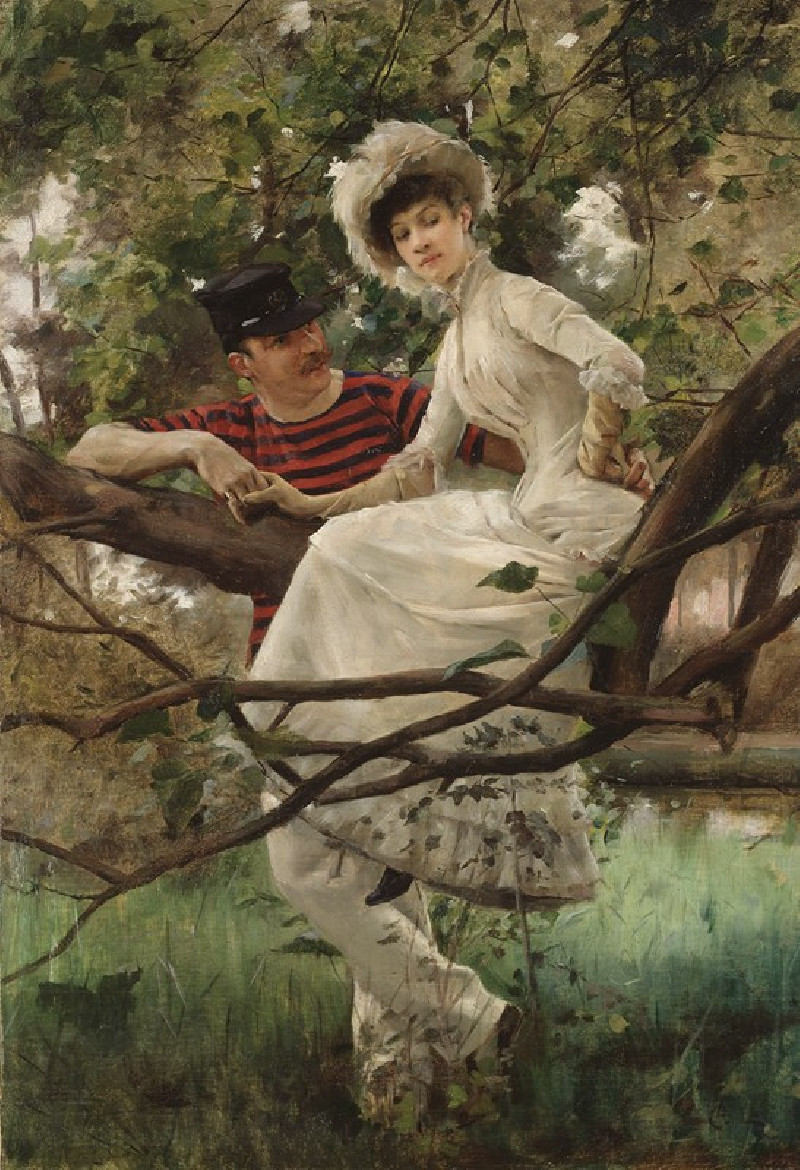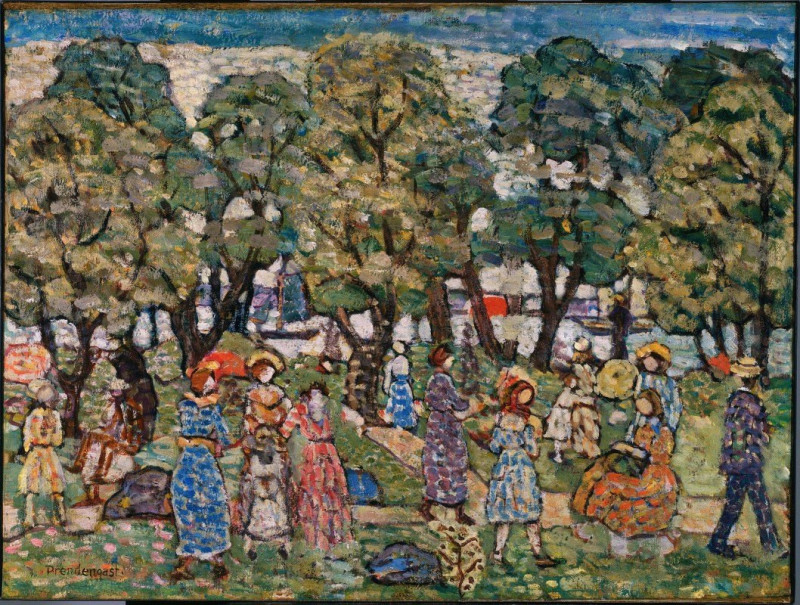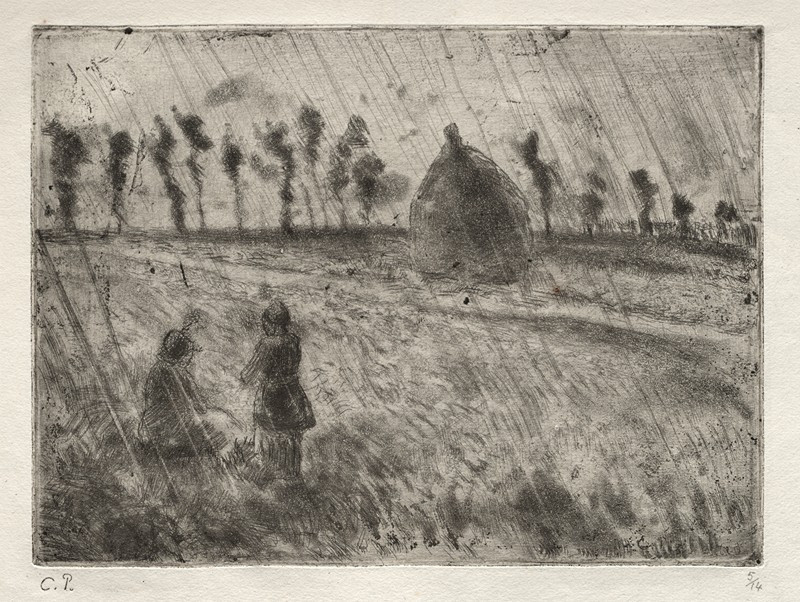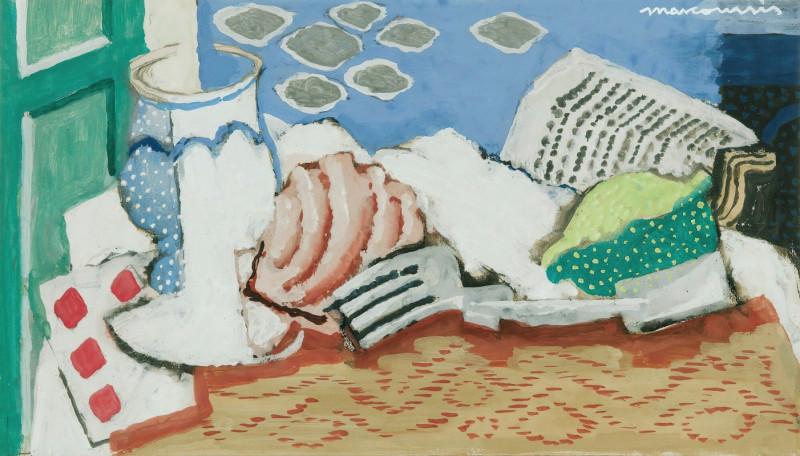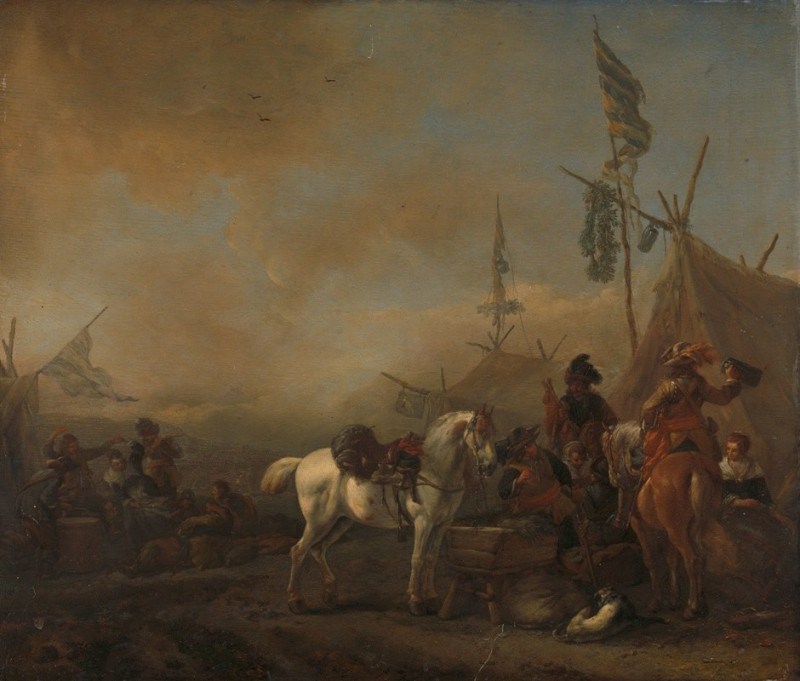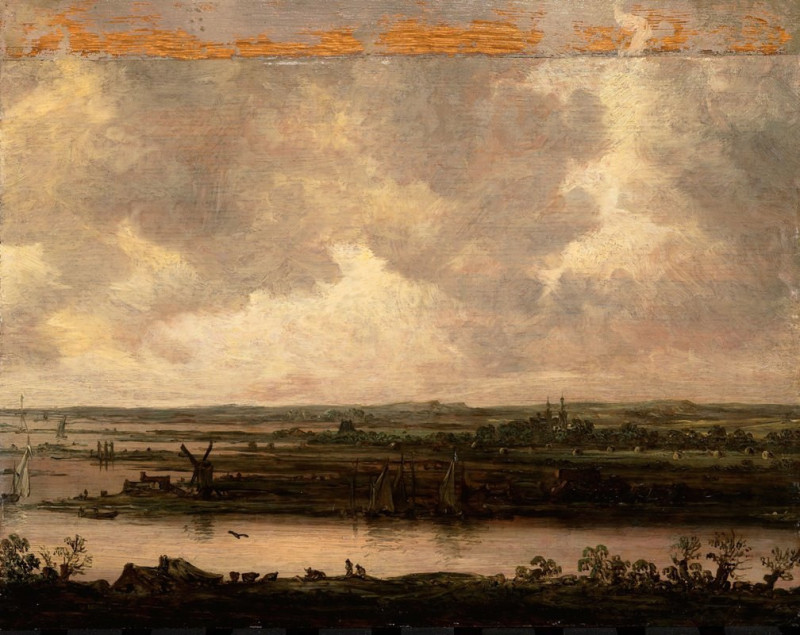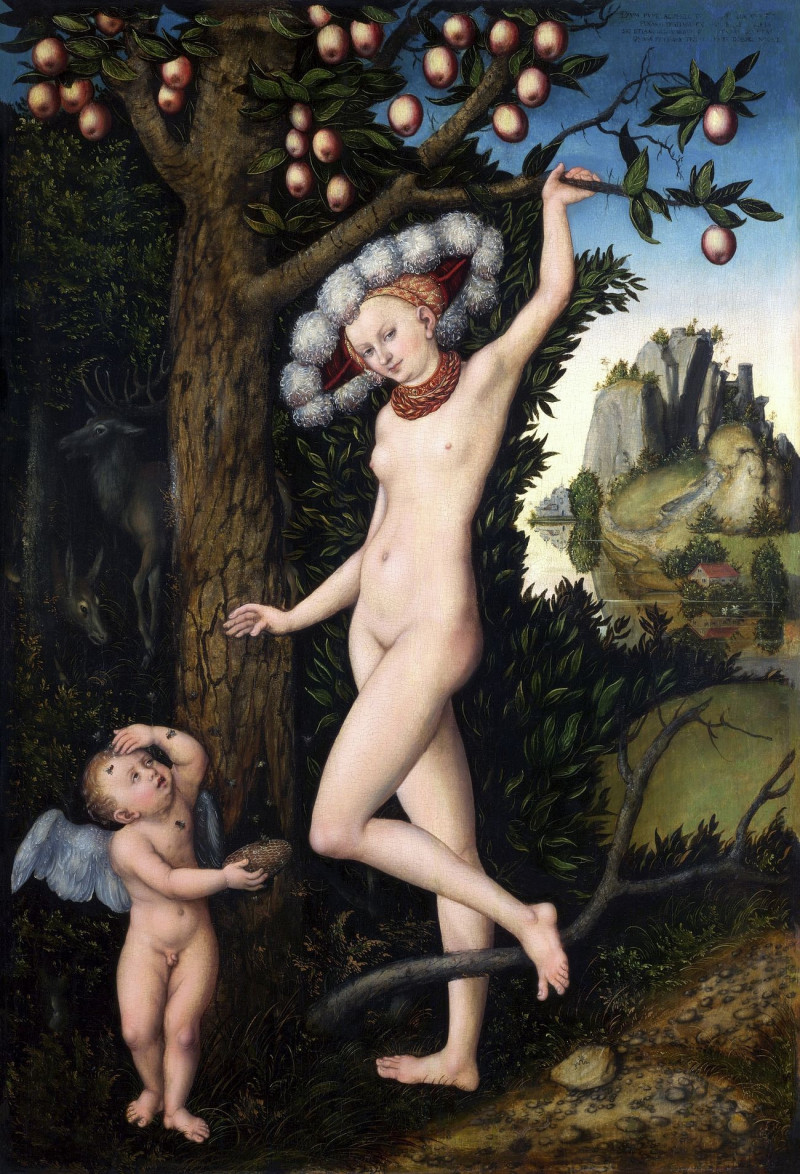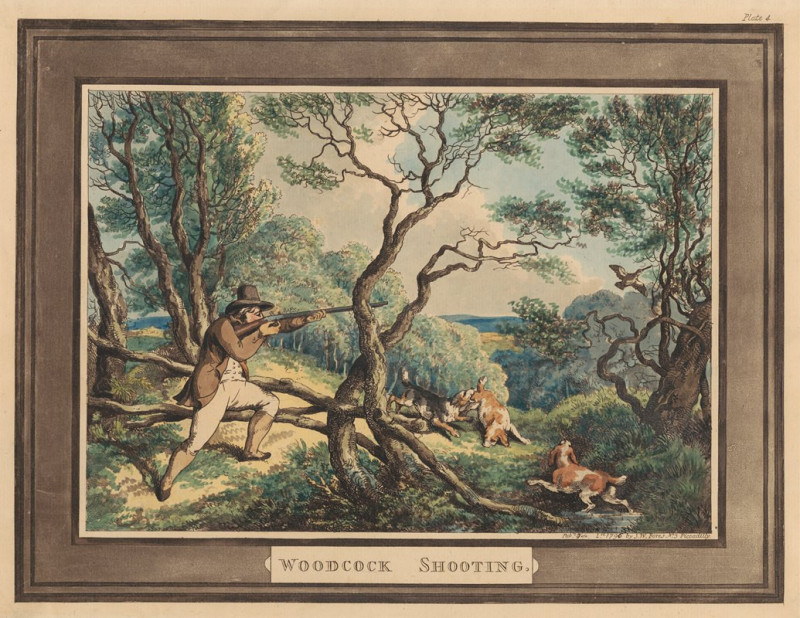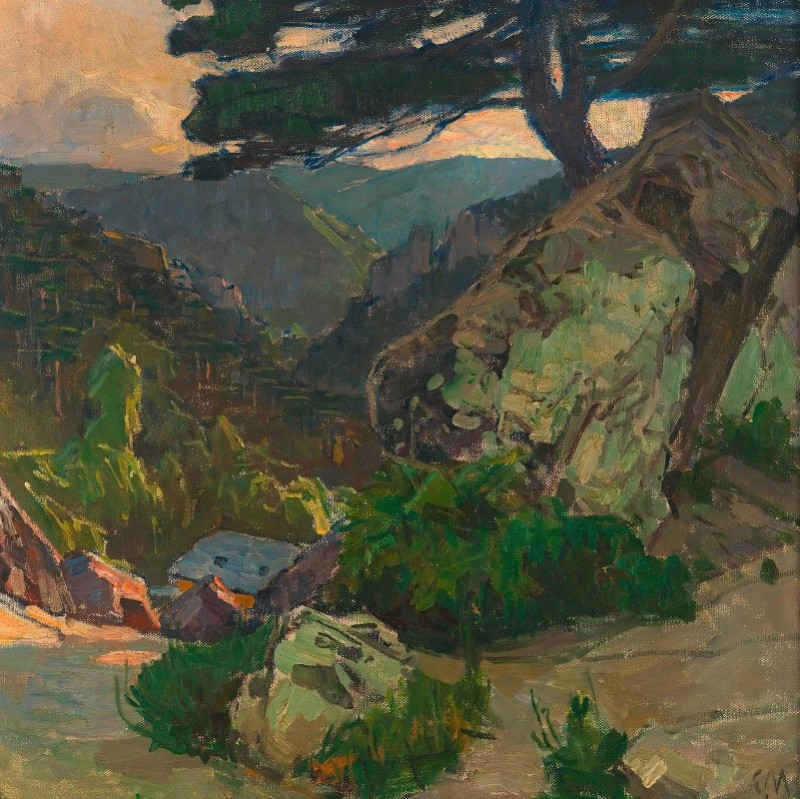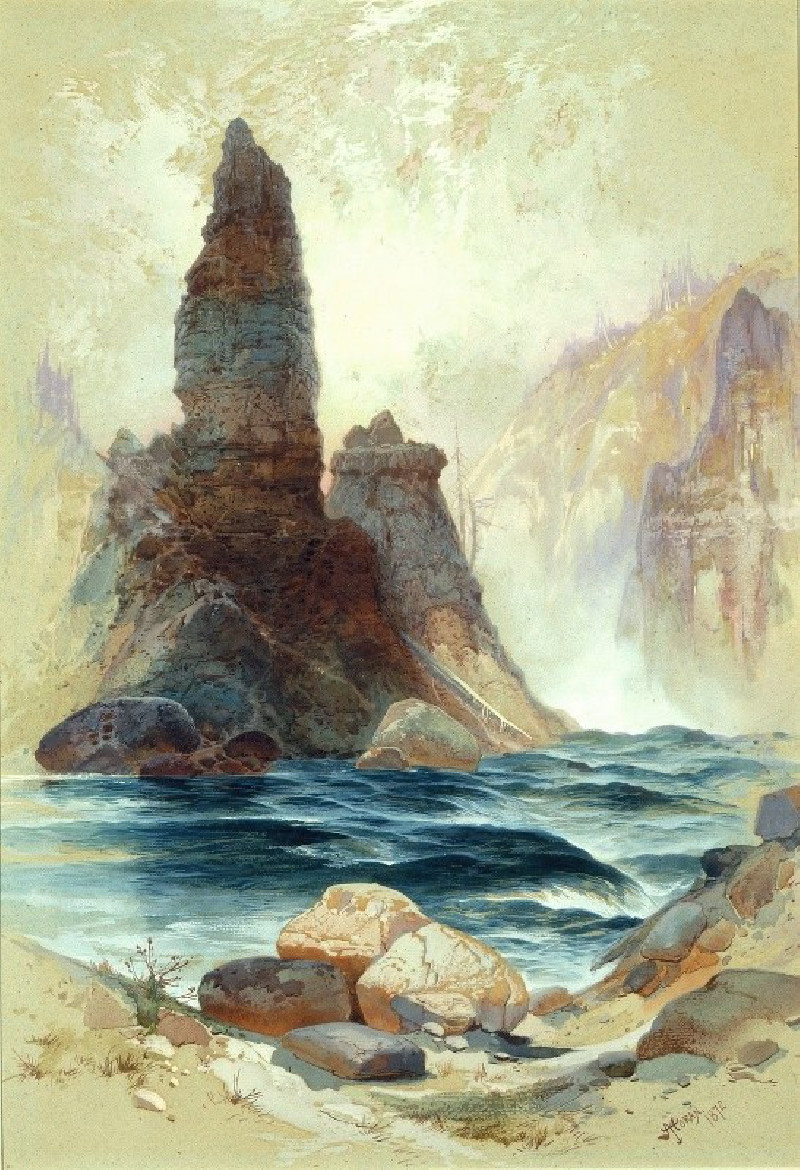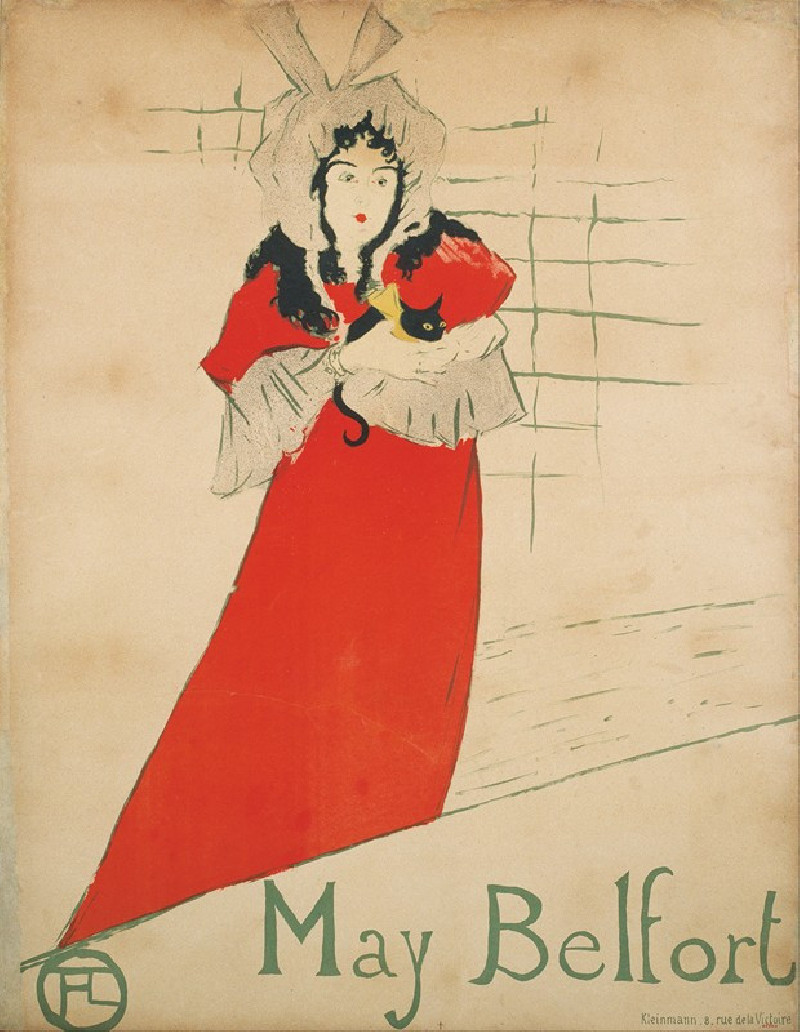Indian Peafowl (1918-1922)
Technique: Giclée quality print
Recommended by our customers
More about this artwork
"Indian Peafowl" by Charles Robert Knight, painted between 1918 and 1922, is a mesmerizing representation of the vibrancy and elegance of nature. The painting captures a regal male peacock perched majestically on an ancient, gnarled tree branch, its spectacular tail feathers cascading down like a waterfall of colors. The iridescence of the plumage, with its myriad of eye-like patterns in dazzling blues and greens, contrasts beautifully against the lush, verdant background of dense foliage and dappled sunlight.Next to it, a peahen, with her more subdued coloring, sits gracefully. Her presence complements the flamboyance of the male, showcasing the striking sexual dimorphism typical of the species. Knight's skillful use of light and texture brings this serene woodland scene to life, turning it into a vivid tableau of natural beauty and tranquility.
Delivery
Returns
Charles Robert Knight (October 21, 1874 – April 15, 1953) was an American wildlife and paleoartist best known for his detailed paintings of dinosaurs and other prehistoric animals. His works have been reproduced in many books and are currently on display at several major museums in the United States. One of his most famous works is a mural of Tyrannosaurus and Triceratops, which helped establish the two dinosaurs as "mortal enemies" in popular culture. Working at a time when many fossil discoveries were fragmentary and dinosaur anatomy was not well understood, many of his illustrations have later been shown to be incorrect representations. Nevertheless, he has been hailed as "one of the great popularizers of the prehistoric past".


